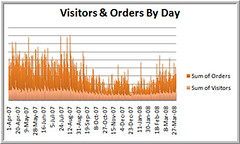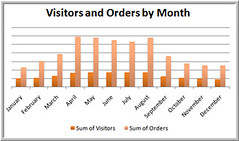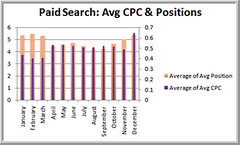By Jeff Campbell, VP Product Development
Most marketers, website owners, and media buyers realize site traffic ebbs and flows in seasonal, monthly, weekly, daily, and hourly patterns – but many don’t take proactive action in planning to make the best of those changes. Forecasting seasonality requires one to look at three types of data sources: 1) historical site performance, 2) upcoming on/offline promotions/advertising, and 3) industry volume metrics. Developing predictive econometric models is a bit too advanced for this post, so if you know what that is, lower your expectations ;)
Performing a basic seasonality analysis and resulting forecast allows these pressing questions to be answered:
- How much media needs to be budgeted by month or by quarter? Should my monthly or quarterly ROI expectations change?
- If given additional budget, when is the best time to invest? What can I expect in conversions?
- When are people researching vs. buying my products?
- Should my optimization initiatives or tactics change with my traffic levels?
- What effect does an industry news story or certain event have on my traffic or ROI?
Determining Historic Website Seasonality. Let’s start by looking at historic data from web analytics. You’ll want to pull Orders, Revenue, and Visitors all website traffic as well as individual campaigns or traffic sources such as Paid and Natural Search. After building this database, it’s time to let your Pivot Chart skills shine as you look for patterns:




With a quick look at just a few examples one can indeed see there is some seasonality in play. Incoming traffic, revenue, conversion rate, and ROI will all vary by month. April through August are the prime months, historically, with a holiday bump in December. You’ll certainly want to look at data for more than just one year to confirm this. Then, you’ll want to overlay past promotions/advertising to see the effect they may or may not have had so you can account for that in the forecast plan. We’ll talk more about taking actions from these data insights in the upcoming Forecasting post.Tomorrow, I'll wrap this up with Part 2, Determining Industry Seasonality.



0 comments:
Post a Comment